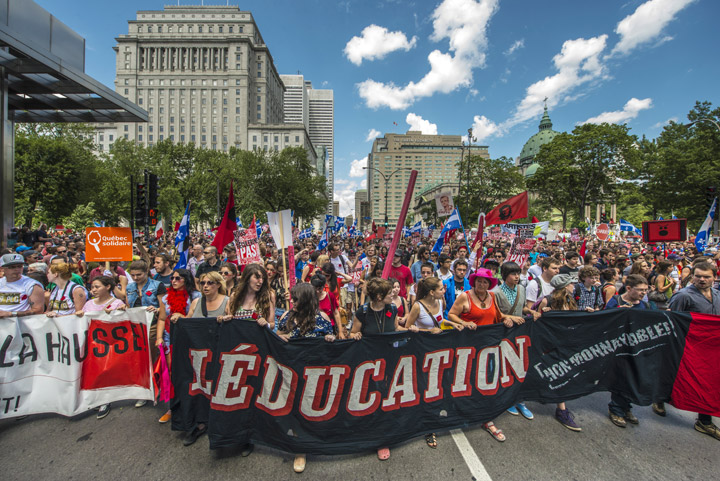TORONTO – Remember when slinging a few beers on the weekend could cover the cost of university tuition? Not the case anymore.

The average Canadian student now has to work three times the number of hours as their parents did in order to pay for one year of post-secondary education, and the Canadian Federation of Students says this dramatic increase is forcing students to choose between deep debt or an education.
According to data from the Canadian Centre for Policy Alternatives (CCPA), in 1975 students needed to work around 200 hours at a minimum wage job in order to pay for one year’s tuition.
Now, students must work around 650 hours to cover the cost of tuition for one year – and this doesn’t include paying for books and living expenses.
The student’s advocacy group points to Newfoundland and Labrador as an example of a province making adjustments as the cost of education climbs out of reach.
“Newfoundland and Labrador is the best example of strong policies and investments that make education more affordable and should serve as a model for other provinces to follow,” said Jessica McCormick, National Chairperson of the Canadian Federation of Students.
Students in Newfoundland and Labrador have the lowest tuition fees in Canada, averaging $2,644 a year.
- Trudeau tight-lipped on potential U.S. TikTok ban as key bill passes
- Canadian man dies during Texas Ironman event. His widow wants answers as to why
- Hundreds mourn 16-year-old Halifax homicide victim: ‘The youth are feeling it’
- On the ‘frontline’: Toronto-area residents hiring security firms to fight auto theft
In 1998, after massive protests across the province, then-Premier Brian Tobin froze tuition fees. In 2000, then-Premier Roger Grimes implemented a 25 per cent reduction to tuition (over a three-year period), and successors Danny Williams and Kathy Dunderdale maintained the lower rates until 2013.
Ontario, by contrast, has the highest average tuition fees in Canada, at $7,259 per year. According to CCPA, it takes 2.7 times the number of hours working at a minimum wage job to pay for tuition than it did in 1975.
The degree with the most drastic increase in tuition fees is dentistry, averaging $17,324 for a year of schooling. In Saskatchewan, students pay $32,960 for one year of dental school tuition. Compare that to average yearly tuition fees of $686 in 1975. Students today must work six times as many hours to pay for dentistry school as in 1975.
Looking for a “bargain?” Try education. It’s the lowest of all the undergraduate degrees in Canada, although fees can vary by nearly $4,000 depending on the province. Today the average sits at $4,378, compared to $491 in 1975.
So it’s cheaper – but that doesn’t make it any easier to find work.
You can see the full CCPA interactive on tuition fees here.


Comments